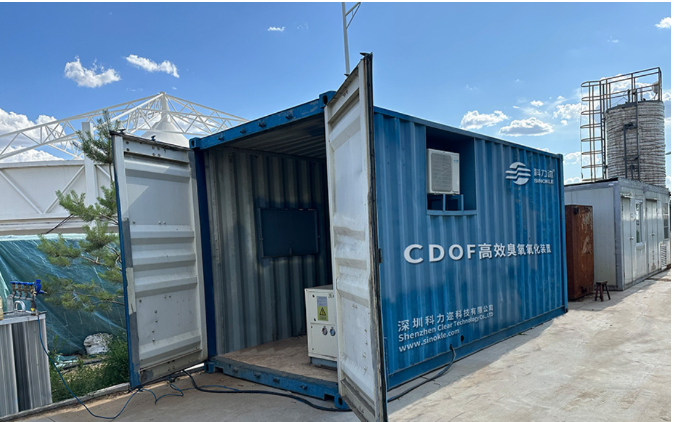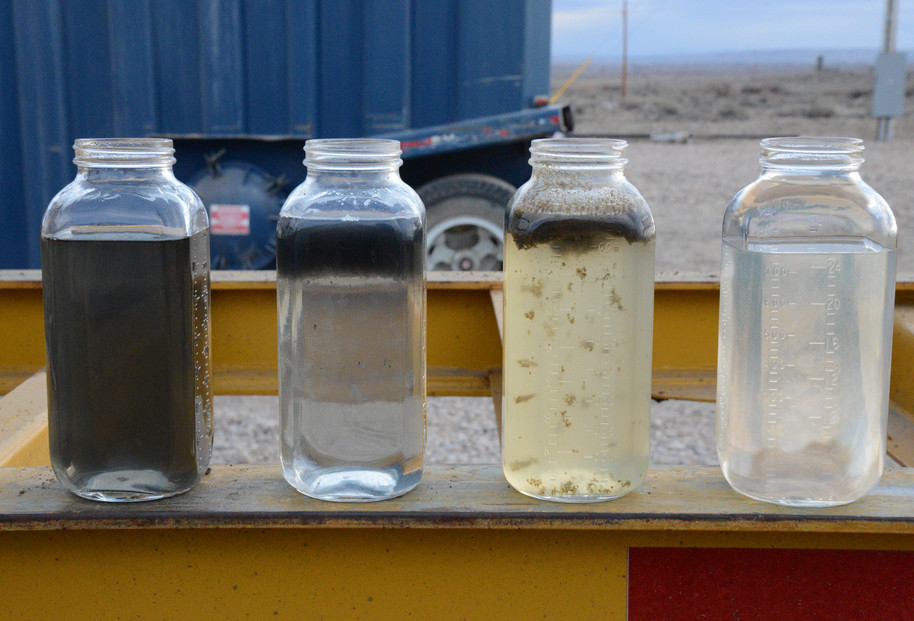New Progress in Pharmaceutical Wastewater Treatment: Application of Integrated Ozone Advanced Catalytic Oxidation and Air Flotation System
The production process of chemical pharmaceuticals involves synthesizing raw materials through chemical processes and isolating and purifying them from medicinal plants. Pharmaceutical wastewater refers to the process wastewater, washing wastewater, and other types of wastewater generated during the production process of chemical pharmaceuticals. Due to the lengthy and complex nature of chemical pharmaceutical production processes, the variety of raw and auxiliary materials used, the generation of numerous by-products, and the typically small-batch intermittent production, pharmaceutical wastewater exhibits characteristics of complex water quality, high concentrations of organic matter and suspended solids, strong toxicity, and poor biodegradability. Although significant progress has been made in the treatment technology of pharmaceutical wastewater in China, the improvement in the effectiveness of wastewater treatment has been relatively slow in practice, and there are still many shortcomings in deep treatment technology.
Currently, the main methods for treating pharmaceutical wastewater include physical-chemical methods, biological treatment methods, chemical oxidation methods, as well as various combinations of these methods. Physical-chemical methods mainly include coagulation, adsorption, and electrocoagulation, among others. However, these methods have low treatment efficiency and are prone to secondary pollution. Biological treatment is commonly used for pharmaceutical wastewater, but it often yields poor treatment results, with COD and color difficult to meet standards after treatment. Moreover, pharmaceutical wastewater can be toxic to microorganisms, making it difficult for the process to operate stably over the long term. Chemical oxidation methods, such as electrochemical methods and advanced oxidation processes, are effective but often require high energy consumption and operational costs, making them less feasible for general factory use. Flocculation and precipitation methods have limited applications, especially for long-chain and cyclic organic compounds, and they are costly. Therefore, among chemical methods, advanced oxidation processes are the most widely used.
To address the challenges of deep treatment technology for pharmaceutical wastewater, Sinokle has developed an integrated ozone advanced catalytic oxidation-gas flotation system for pharmaceutical wastewater treatment. The ozone catalytic oxidation technology achieves emission standards by breaking down organic compounds in wastewater. The ozone catalytic oxidation method effectively enhances biodegradability.
In heterogeneous catalytic ozonation technology, catalysts exist in solid form, making them easy to separate from water, reusable, thus avoiding catalyst loss and reducing subsequent treatment costs. Simultaneously, the device integrates heterogeneous ozone catalytic oxidation technology and microbubble air flotation technology. Compared to traditional ozone reactors, microbubble ozone reactors have the following advantages:
High ozone utilization: Ozone micro-nanobubbles, with diameters smaller than 50 μm when pressurized and dissolved, have a long residence time in the liquid, significantly improving ozone utilization efficiency.
Accelerated reaction rate: Microbubbles have a large surface area, promoting gas dissolution during their ascent, enhancing mass transfer efficiency in the solution, and accelerating reaction rates.
Excellent flotation effect: Microbubbles, similar in size to suspended solids, carry opposite charges, making it easier to capture and remove suspended solids in pharmaceutical wastewater.
High ζ potential: Microbubble gas-liquid interfaces exhibit stronger adsorption of anions than cations, resulting in surfaces with a negative charge, facilitating the formation of stable double layers. The significant increase in ζ potential is advantageous for adsorbing organic compounds in pharmaceutical wastewater.
Strong oxidation capability: Upon microbubble rupture in the solution, the rapid change in the gas-liquid interface prompts the release of chemical energy stored in ions aggregated on the bubble surface. This release stimulates the generation of hydroxyl radicals with high oxidation capacity, which can degrade organic pollutants, such as heterocyclic compounds, that are difficult to oxidize under normal conditions, thereby achieving purification.

In summary, Sinokle's integrated ozone advanced catalytic oxidation-air flotation system achieves ozone utilization rates exceeding 99.9%, with reaction rates over four times faster than traditional ozone reactors. The following figure illustrates the engineering performance of SciTech's ozone advanced oxidation-air flotation integrated equipment in treating pharmaceutical wastewater from a large pharmaceutical group in Inner Mongolia. This technology achieves a decolorization rate of over 95%, suspended solids removal rate exceeding 90%, and a significant reduction in COD. Moreover, the operational costs are much lower than traditional ozone oxidation processes.

